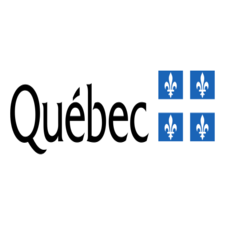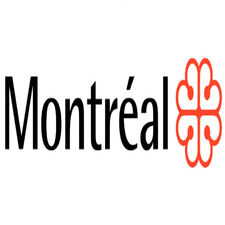MNT
Type of resources
Available actions
Topics
Keywords
Contact for the resource
Provided by
Formats
Representation types
Update frequencies
status
-

A digital terrain model (DTM) is a digital representation of elevations throughout the Province. DTM files contain elevation mass points, check points, spot heights and random densified points. The spacing between the elevation points is approximately 70 metres and the absolute vertical accuracy of a single elevation point is approximately 2.5 metres. The elevations are expressed as metres above mean sea level.
-

Digital terrain models offer a representation of the relief south of the 52nd parallel, in the form of an elevation matrix. This matrix makes it possible to visualize the territory in perspective and to perform three-dimensional spatial analyses, using appropriate software. A module specialized in three-dimensional data processing, such as 3D Analyst or Spatial Analyst, is required to visualize the digital altitude model in three dimensions. This digital altitude model (10-meter pixel matrix) is obtained by processing altimeter data (level curves and elevation points) from ** [topographic databases on a scale of 1/20,000] (https://www.donneesquebec.ca/recherche/fr/dataset/cartes-topographiques-a-l-echelle-de-1-20-000) **.**This third party metadata element was translated using an automated translation tool (Amazon Translate).**
-

These digital terrain models (DTM) offer a regional numerical representation of Quebec's relief based on altimetric (altitude) and planimetric (rectangular or geographic) data. They are the result of a collaboration between the Ministry of Natural Resources and Forests (MRNF) and Natural Resources Canada (NRCan) within the framework of the Agreement to produce an up-to-date digital map of northern Quebec and the creation of the product “National Hydro Network (RHN)” for the territory of Quebec. When integrated into a geographic information system, these models allow the implementation of multiple types of spatial analyses such as natural risks, landscape analysis, infrastructure implementation, etc. NCDs are obtained as a result of hypsometric and hydrographic data processing that uses the concept of hydro-coherence that uses the concept of hydro-coherence consisting in interpolating altimetric values by ensuring a connected drainage network and an accurate representation of crests and river courses. water. The oriented RHN filament makes it possible to grade lakes and to control the altimeter descent of watercourses. The final product is a quality portrait of relief on a scale of 1/50,000. DNTs provide altitude values that are based on a grid with a resolution of 0.324 arcseconds in geographic coordinates, which corresponds to a resolution of about 10 meters in the field.**This third party metadata element was translated using an automated translation tool (Amazon Translate).**
-

The digital terrain model (DTM) is a simplified representation of ground altimetry. The available data is in the form of an irregular triangular mesh (TIN). This is polygon numerical geographic data constructed by triangulating a set of points. The vertices are connected to a series of segments to form a mesh of triangles of different dimensions. This representation can be used as a basis for the 3D buildings of the digital base model. It should be noted that the data made available by the City is proposed for planning purposes and not for construction purposes given the associated decimeter details. The [3D buildings 2016 (LOD2 model with textures)]] (https://donnees.montreal.ca/ville-de-montreal/batiment-3d-2016-maquette-citygml-lod2-avec-textures2), the [2013 3D buildings (2013 3D buildings (CityGML LOD2 model with textures)] (/city-of-montreal/model-numeric-plateau-mont-royal-buildal-build2-buildings-lod2-with-textures), or the [3D buildings 2009 (CityGML LOD2 model with textures)] (/city-of-montreal/model-numerique-plateau-mont-royal-batiments-lod2-with-textures), or the [3D buildings 2009 (CityGML LOD2 model with textures)] (/city-of-montreal/model-numeric-plateau-mont-royal-build2-buildings-lod2-with-textures), or the [3D buildings 2009 (CityGML LOD2 model with textures)] (/city-of-montreal/model-numeric-s-citygml-lod2-with-textures) complement the digital terrain model in the urban territorial representation of Montreal. The [elevation data from aerial LiDAR] (/city-of-montreal/lidar-aerien-2015) are also available on the portal.**This third party metadata element was translated using an automated translation tool (Amazon Translate).**
-

__The link: *Access the data directory* is available in the section*Dataset Description Sheets; Additional Information*__. Products derived from lidar (Light Detection and Ranging) are generated as part of the [__provincial lidar sensor data acquisition project__] (https://mffp.gouv.qc.ca/documents/forets/inventaire/Analyse_retombees_lidar-Finale.pdf). It is therefore to facilitate the use of raw lidar data and optimize its benefits that the Ministry of Natural Resources and Forests (MRNF) generated and made available products derived from lidar in a user-friendly format. Lidar technology makes it possible to accurately provide information such as ground altitude, forest cover height (canopy), slopes, and contour lines. Here is the list of the five derived products: + Digital terrain model (spatial resolution: 1 m) + Digital terrain model in shaded relief (spatial resolution: 2 m) + Canopy height model (spatial resolution: 1 m) + Slopes (spatial resolution: 2 m) + Slopes (spatial resolution: 2 m) + Level curve (interval of: 1 m) This data covers almost all of the south of the province. This map is distributed by map sheets at a scale of ** 1:20,000**. __ ⚠️ 1) Note that__ the resolution of the following products (digital terrain model, digital terrain model in shaded relief, canopy height model and slopes) **has been slightly degraded** when viewed in the interactive map to ensure a powerful display. __ ⚠️ 2) Note that__ **the planimetric and altimeter accuracy of curves is variable**, but inevitably lower than that of the lidar surveys used to generate them. Moreover, it is recommended to use these level curves only for visual representations, and not for quantitative analyses.**This third party metadata element was translated using an automated translation tool (Amazon Translate).**
-

The joint Natural Resources Canada/Department of Fisheries and Oceans Marine Spatial Planning Program requires the highest resolution marine based bathymetric elevation data and adjacent land based topographic elevation data that are available. This digital elevation model of Canada's west coast compiles the best data available from multiple government agencies to create a regional model gridded at 10 meter spacing. The transitions between the marine and terrestrial areas are seamless creating a continuous surface of elevations for scientific research and mapping.
-

High-resolution relief data produced from LiDAR surveys and limited to crop plots are particularly useful in the agricultural sector since they make it possible to model surface drainage in order to identify drainage problems or the risks of soil erosion. Agronomic interpretation will take advantage of this information not only in the form of the numerical terrain model and the shading, but also with the level curves, flow paths and basins located inside the cultivated plots, as delimited by the database of declared agricultural plots and productions (BDPPAD) of the Financière Agricole du Québec (FADQ). Level curves of 1 m covering the entire treated territory excluding cultivated plots (agricultural, forest, urban, etc.) are also available. These new data are the result of a collaboration between the MRNF and the MAPAQ, and they are offered thanks to the open valorization of data initially derived from LiDAR to the MRNF Forest Inventory Directorate (DIF). We hope that this data will support better soil and water management interventions, in order to mitigate the consequences of climate change, and to promote sustainable agriculture.**This third party metadata element was translated using an automated translation tool (Amazon Translate).**
 Arctic SDI catalogue
Arctic SDI catalogue